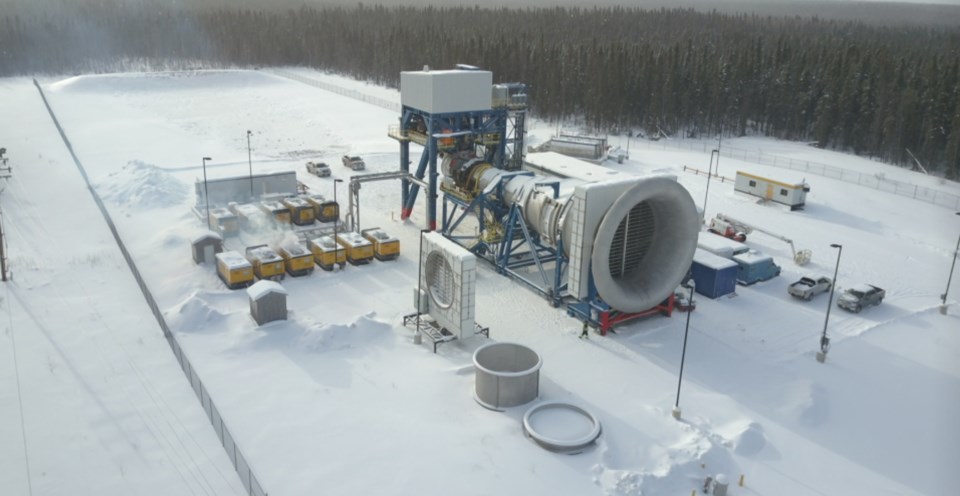Cold-weather engine testing of the type done at MDS Aerotest’s GLACIER facility just south of Thompson, where Rolls Royce and Pratt Whitney test aircraft engines, benefits the city’s economy because it brings in visiting workers who stay in hotels and dine at local restaurants.
MDS Aerotest general manager Troy Ramnath recently told the Thompson Chamber of Commerce that there are even hopes to expand the facility and the types of test conducted there.
It’s a stable economic contributor, mainly because the facility can’t just be picked up and moved somewhere else, or a similar facility constructed elsewhere without incurring significant expense.
But when it comes to other cold-weather testing, Thompson’s advantage – its weather – is not unique and numerous other locations are competing for the same piece of the pie – cold-weather testing by car and snowmobile manufacturers and helicopter companies.
Ford cold-weather testers were recently in the Thompson area, taking cars for test drives across the frozen surface of Paint Lake, but stationary testing can be done at the company’s McKinley Climatic Laboratory at Eglin Air Force Base in Florida, where temperatures can be pushed down to as low as -40 degrees Fahrenheit in as little as 10 hours.
Electric vehicle manufacturer Tesla has a dedicated testing centre in Alaska, about two hours away from Fairbanks.
In Canada, Yellowknife, Northwest Territory is stepping up its game to try to attract more winter weather testers, with the Yellowknife Airport, the City of Yellowknife, the Department of Industry, Tourism and Investment and NWT Tourism having held discussions and created the Yellowknife Airport Cold Weather Testing Group, whose goal, as stated by NWT Industry, Tourism and Investment Minister Wally Schumann last month, is to “ensure Yellowknife is recognized by global aerospace leaders as the number one arctic cold weather testing destination.”
Bell Helicopters held a news conference March 13 to talk about their recent testing visit to Yellowknife with 44 staff members for more than six weeks, and chief helicopter test pilot Pat Lindbauer was quoted by Yellowknife’s Cabin Radio as saying “The support we got was top-notch. There were no issues at all with the airport facility, the facilities here for the hangar space, and that sort of stuff. They definitely got that right.”
Schumann said in his Feb. 12 statement that Bell’s testing was expected to inject $2.3 million into the local economy.
“In recent months, Yellowknife Airport has also had discussions with Mitsubishi to test their medium-sized jets, and Korean Aerospace Industries has inquired about testing their helicopters here,” Schumann said.
When you search “Thompson winter weather testing” online, however, most results are about the opening of the GLACIER facility, or old news stories from this newspaper about past winter weather testing. A link to information about Riverlodge Place’s extreme winter testing campus brings up an error message, while the old Thompson Subzero website is no longer active. Testing is still going on, but other locations may be co-ordinating their efforts better than in Thompson, where winter weather testing started out and has grown up as an accidental industry.
Volker Beckmann and Curtis Ross spoke about cold weather testing at a Thompson Chamber of Commerce meeting last April, stressing that temperatures are only one piece of the puzzle.
“Winter testers in a way are tourists,” Beckmann said. “They’re here for a short period of time, they’re visitors, they stay in hotels, they eat meals in a restaurant. There’s a whole bunch of economic benefits to having a winter testing industry.”
While services are important, trust is a key component of the industry, said Ross, who has facilitated testing in Thompson by Ford and Honda as well as other companies including Bell Helicopters. Unfortunately, that leads to specific people being the contact points for companies, which can pose problems in trying to establish longer-term relationships.
“I’ve been in this industry now for 15 years and I’m getting to the point where I want to transition so you talk about succession planning and the opportunity for those who want to take over,” he said. “It’s very much relationships with these companies. They feel very, very comfortable with that one person and that’s how it exists and that’s how it remains and you’re not going to change that culture because what happens within an organization is their faces are going to change 10 times but they say, ‘Curtis, he will help you in Thompson.’ Whether it was Ford, whether it was Honda, it was the same thing. We’re going to have to prepare ourselves for those changes within Thompson so we’re going to have to have those entrepreneurs take that on or we’re going to lose the industry.”




